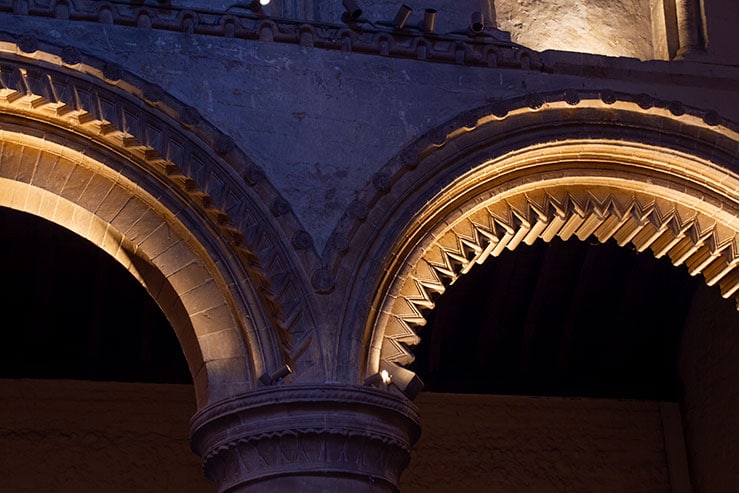- ABOUT
- JUDGING
- CONTACT
- MORE
- 2024 Entries
- Installations 2024
- Past Winners
- Subscribe
- [d]arc directory
- arc magazine
- darc magazine
Steyning Parish Church of St Andrew and St Cuthman, UK
ProjectSteyning Parish Church of St Andrew and St CuthmanLocationSteyning, UKLighting DesignCES Lighting & Electrical Specialists, UKArchitectHanslip and Company, UKClientThe Revd Mark Heather LLB BALighting SuppliersMike Stoane Lighting, LightGraphix, Basis Lighting, iGuzzini
Since the eighth century, Steyning has had a church standing proudly within its borders and has a history so old that it’s rumoured that King Alfred the Great’s father was once buried in its grounds. However, if you visit Steyning today, the church you will see dates back to the eleventh century.
The nave (1160 — 1175), with its grand columns and archways, is the most prominent part of the church. If you look closely, you can see carvings of biblical accounts. These would act as a visual aid for Priests preaching these stories to the congregation, many of whom could not read or write. A church with such a rich history deserves lighting that highlights its grandeur and elegance.
Our goal was to pay homage to the church’s life and past, with particular attention to the original architecture. Before CES reimagined the church’s lighting it was outdated, inflexible and did not cater to the artistic construction or modern-day needs.
We designed the new lighting scheme to create a flexible environment for the church’s requirements, considering practicalities and aesthetics while maintaining a straightforward approach. Firstly, we implemented a simple control method; movement sensors, triggering welcoming lighting as visitors entered the church and an easy-to-operate wall-mounted controller for manual operation.
Secondly, to do justice to such a charming mediaeval structure, we had to consider the wiring. At every design stage, the wiring has been fixed discreetly, unseen by those within the church. The modern wiring is dependable and will take care of this old building for many decades to come. Plus, with high quality, reliable LED luminaires and the relocation of electrical components to more accessible lower levels, ongoing maintenance for the church has drastically simplified and reduced.
The focal point of CES’ lighting design at the Church of St Andrew and St Cuthman was the bespoke pendants. Made to honour the history and charisma of the building, the pendant design was developed and then discussed between the church, architect and CES. Ultimately, the final design was simple but elegant, with six shades up and down. The pendants complement the mediaeval architecture with modern refinement, fitting for this distinctive setting.
The project aimed to create a lighting design that complements the existing building, recognises its historical significance, and is functional for the church’s daily uses. In this esteemed and ancient space, it was important to create a lighting system that would continue to serve the community, the same way the church has served locals for over a millennia.










